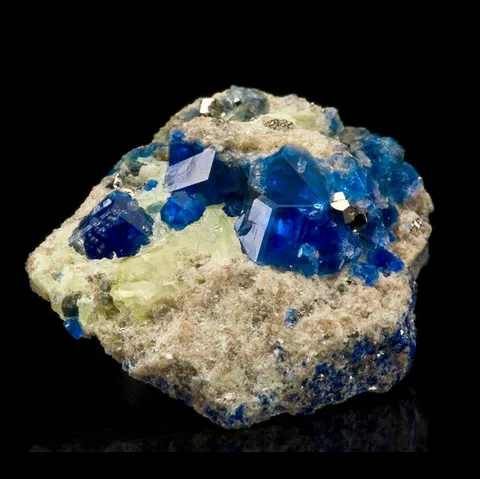SODALITE
Class : Silicates
Subclass : Tectosilicates
Crystal system : Cubic
Chemistry : Na8Al6Si6O24Cl2
Rarity : Rare
Sodalite is a mineral from the feldspathoid group. Its atomic structure has large vacancies in which Na or Cl ions are lodged. It is found in alkaline rocks undersaturated with silica, in particular nepheline syenites and the limestone rocks that they metamorphized. It is the faithful accompanist of the nepheline whose deposits it shares. It owes its name to its chemical composition rich in sodium. Sodalite most often occurs in rounded grains or in shapeless grainy masses (sometimes several kilograms), rarely in crystals, most often rhomboidal dodecahedra. The blue to purplish-blue sodalite used in ornamentation is well known but this is not its most frequent color : it is more white, colorless, greyish, sometimes greenish or even pink (hackmanite variety which is dark), with a strong vitreous to oily luster. It is a stone widely used in sculpture, decoration and jewelry.
Sodalite in the World
Sodalite in France
Sodalite is not present in a notable way in the French subsoil.
Twinning
Twinning is common on {111} forming pseudohexagonal prisms (this may not be a twin, but simply an elongated growth in direction (111)).
Fakes and scams
No fake inventories for this mineral species.
Hardness : 5.5 to 6
Density : 2.27 to 2.33
Fracture : Conchoidal
Trace : White
TP : Translucent to transparent
RI : 1.483 to 1.487
Birefringence : None
Optical character : None
Pleochroism : None
Fluorescence : Yellow, orange, red
Solubility : Hydrochloric acid
Magnetism : None
Radioactivity : None





